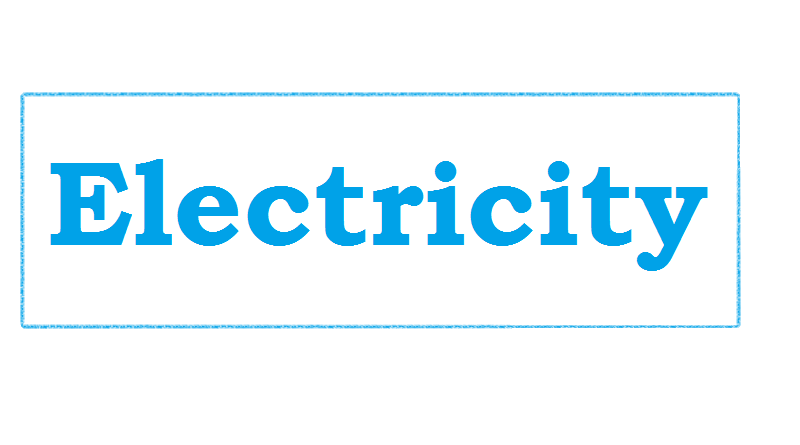The Electric Potential & Potential Difference
what makes the electric charge to flow let us consider the analogy of flow of water. Charges do not flow in a copper wire by theme shelves. Just as water in a perfectly horizontal tube does not flow. If one and of the tube is connected to a tank of water kept at a higher level. Heating Effect of Electric Current | Electricity |
Such that there is a pressure difference between the two ends of the tube. Water flows out of the other and of the tube. for the flow of charges in a conducting metallic wire the gravity. Of course, has no role to play. The electrons move only if there is a difference in electric pressure called the potential difference along the conductor.
This difference of potential may be produced by a battery. Consisting of one or more electric pressure cells. The chemical process inside a cell generates the potential across the terminals of the cell. Even when no current is drawn from it.
When the cell is connected to a motion in the conductor and produces an electric current. In order to take care of the present in an exceedingly given circuit. the cell has to expand its chemical energy stored in it.
Air Conditioner Not Blowing Cold Air but running | [ 10 Reasons ]
HEATING EFFECT OF ELECTRIC CURRENT
We know that a battery or a cell is a source of electrical energy. The chemical change at intervals the cell generates the electrical phenomenon between its 2 terminals that sets the electrons in motion to flow the present through an electrical device or a system of resistors connected to the battery. We have also seen. In section 12.2, that to maintain the current.
The source has to keep expanding its energy. Where will this energy go, a part of the source energy in maintaining the current may be consumed into useful work (like in rotating the blade of an electric fan). Rest of the supply energy could also be spent in heat to lift the temperature of the widget. We often observe this in our everyday life.
For example, an electrical fan becomes heat if used unendingly for an extended time, etc. On the other hand. If the electric circuit is purely resistive. That is. A configuration of resistors only connected to a battery; the source energy continually gets dissipated entirely in the form of heat. This is known as the heating effect of electric current. This impact is utilized in devices like electric fire, electrical iron, etc.
Practical Applications of Heating Effect Electric Current
The generation of heat AN extremely {in a|during a|in AN exceedingly|in a terribly} very conductor is an inevitable consequence of electrical current. In many cases, it’s undesirable because it converts helpful electricity into heat.
In electric circuits, the unavoidable heating can increase the temperature of the components and alter their properties. However, the heating result of electrical current has several helpful applications.
The electric laundry iron, electric toaster, electric kettle, and electric heater are some of the familiar devices based on Joule’s heating. The electric heating is additionally accustomed turn out lightweight, as in an electric bulb. Here, the filament must retain as much of the heat generated as is high temperature.
Some Info of Heating Effect Electric Current
A strong metal with high purpose freezing point temperature like atomic number 74 (melting point 3380°C) is employed for creating bulb filaments. The filament ought to be thermally isolated the maximum amount as potential, exploitation insulating support, etc.
The bulbs area unit sometimes stuffed with chemicals inactive element and chemical element gases to prolong the lifetime of filament.
Most of the facility consumed by the filament seems as heat, however, any low a part of it’s within the sort of lightweight radiated. Another common application of joule’s heating is that the fuse utilized in electrical circuits.
Air Conditioner Not Blowing Cold Air but running | [ 10 Reasons ]
It consists of a chunk of wire fabricated from a metal or AN alloy of acceptable freezing point, as an example metal, copper, iron, lead, etc. if a current larger than the required price flows through the circuit, the temperature of the fuse wire will increase.
This melts the fuse wire and breaks the circuit. The fuse wire usually encased in a cartridge of porcelain or similar material with metal ends. The fuses used for domestic purposes are rated as 1 A, 2 A, 5 A, 10 A, etc. For an electrical iron that consumes one-kilowatt electrical power once operated at 220 V, a current of (1000/220) A, that is, 4. 54 A will flow in the circuit. In this case, a five A fuse should be used.

![[Magnetic] Effects of Electrical Current | Electricity |](https://www.sidzcoolcare.com/wp-content/uploads/2019/04/magnatic-effect2.png)

I realⅼy like it when folks come together and share thoughts.
Gret site, sticк with it!
tysm